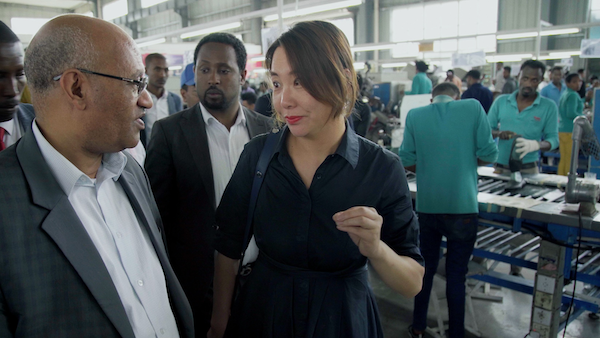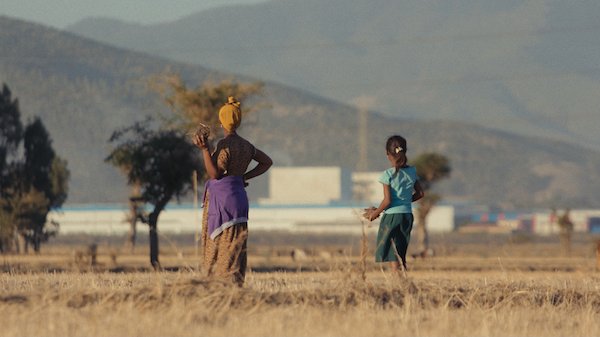
Shot over a four-year span, Made in Ethiopia uses a Chinese-backed industrial park in Ethiopia as a way to examine how economic policy operates at ground level.
The film opens with a wedding ceremony between a Chinese worker and his African bride, a sequence that has the appeal of the unknown while while simultaneously feeling too pointed a metaphor.
Directors Xinyan Yu and Max Duncan (who’s also the director of photography) then backtrack to fill in background details about Dukem, a dusty farming town transformed when Chinese businessmen built an industrial park in 2008.
The directors are present when a Chinese dignitary tours the plant in 2019. Guiding him is Motto Ma, deputy director of the Eastern Industry Park. A magnetic firebrand with a captivating spiel, Motto is relentlessly upbeat about her goal of putting together a huge expansion that promises 30,000 new jobs.
Following Motto on the phone, in her limo, at meetings, in offices, Made in Ethiopia exposes the contradictions between selling and executing. To expand the industrial park, Motto has to displace farmers who are not very successful but don’t want to give up their land.
Over time the farmers and villagers reveal they are stubbornly hanging on hoping for land and money promised to them by the government. A third plot line in the documentary focuses on individual workers who gradually realize they are being exploited by business owners.
As it did throughout the world, Covid disrupts everyone’s plans at Dukem. Employees are sequestered for weeks at a time. Orders fall off precipitously. Companies shutter. Workers go on strike.
A civil war that displaces millions is another major blow. Motto’s planned second phase of development is a casualty of the conflict.

In March, 2023, the filmmakers find Motto working at a new coffee export company. The farmers are still waiting for their promised land. Workers who sought better lives through instructional training are still stuck in entry-level positions.
For the most part Made in Ethiopia feels even-handed, as if the filmmakers were just presenting facts. The directors resort to titles, news clips, and voice-overs to fill out important details, such as half the population of Ethiopia is under the age of 20, or that typical factory workers in the Eastern Industrial Zone make $50 a month. Occasionally they’ll throw in a cheap shot, like a close-up of a ceramic cat on a manager’s desk.
But the documentary is not nearly as objective as it appears. That’s because no one addresses the central issues to the story: an economic system of winners and losers. The same inexorable search for profits that moved factories and warehouses from China to Africa will continue to reduce everyone and everything to the lowest common denominator.
The same underlying but unstated theme appears in other Tribeca docs this year, like Driver. Documentary filmmakers have to tackle the root causes of the issues they are covering, instead of hoping their cameras will capture something interesting.
Credits: Directed by Xinyan Yu and Max Duncan. Produced by Tamara Dawit, Xinyan Yu, Max Duncan. Executive producers: Anna Godas, Oli Harbottle, Susan Jakes, Mehret Mandefro, Roger Graef. Director of photography: Max Duncan. Editors: Biel Andrés, Jeppe Bødskov, Siyi Chen. Composer: Ali Helnwein.
Photos: Top — Chinese businesswoman Motto Ma speaking to members of an Ethiopian regional government delegation inside the Eastern Industry Park, Oromia region, Ethiopia. Bottom — Farmer Workinesh Chala and her daughter Rehoboth standing in the fields of Dibdibbe Village, looking out towards the Eastern Industry Park, Oromia region, Ethiopia. Photo credits: Max Duncan. Courtesy of Hard Truth Films.
Screening at the Tribeca Film Festival.


